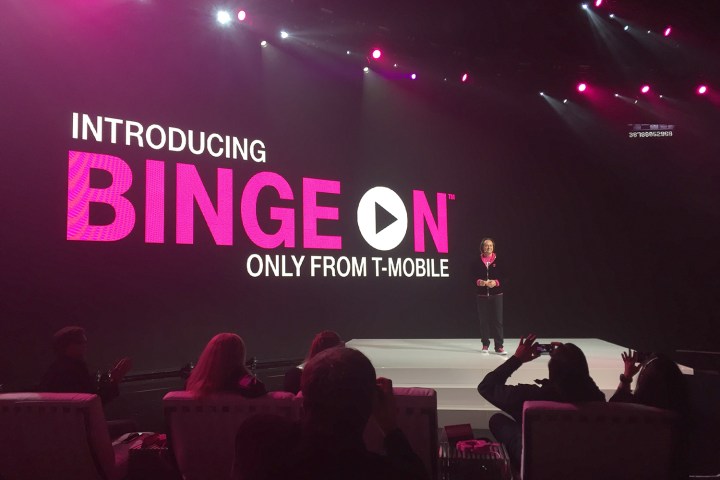
Unreported throttling is illegal under the Federal Communications Commission’s net neutrality laws, passed earlier in the year.
“Reducing data charges can be good for users, but it doesn’t justify throttling all video services, especially without explicit user consent,” a YouTube spokesperson said to The Wall Street Journal.
Binge On waives data fees for video traffic, in exchange for sub-720p DVD quality video. Twenty-four providers partnered with T-Mobile at launch, including HBO Now, Netflix, and Hulu, with YouTube the only major video provider not joining the program.
One fifth of video traffic comes from YouTube, and that percentage is even higher on mobile. That puts T-Mobile in an awkward situation, especially if the allegations of throttling the video service turn out to be true.
The Internet Association, which YouTube’s parent Alphabet is a part of, said that Binge On “appears to involve throttling of all video traffic, across all data plans, regardless of network congestion.” No other video service unaffiliated to the program has mentioned throttling on T-Mobile’s network.
T-Mobile has not commented on YouTube’s complaint.
Nothing is official right now, however the FCC has sent agency letters to T-Mobile, Comcast, and AT&T regarding the new programs all three companies recently announced. That is a different tone from the one FCC Chairman Tom Wheeler used last month, describing Binge On as “highly competitive and highly innovative.”
Wheeler said the letters were not a formal inquiry, but it might turn into one if the complaints from YouTube and net neutrality advocates are accurate.
Editors' Recommendations
- YouTube TV just got even better on iPhones and iPads
- YouTube rolling out some three-dozen new features this fall
- YouTube gives iOS users another reason to pay for Premium
- This YouTube Apple Watch app is just as ridiculous as you’d expect
- Finding recipes on TikTok and YouTube is my new favorite way to cook


